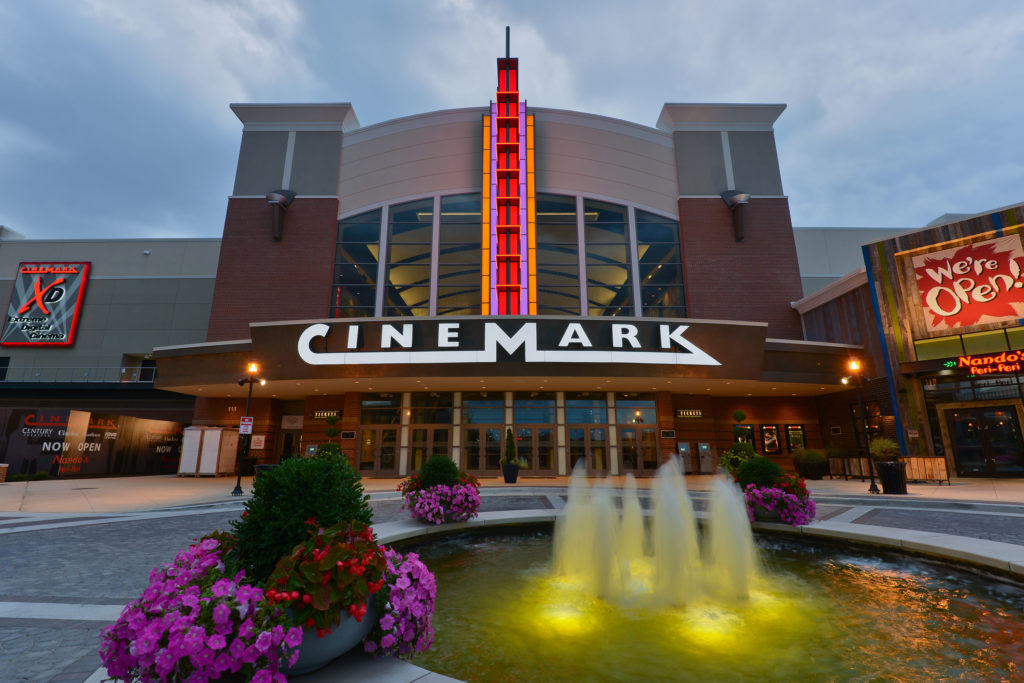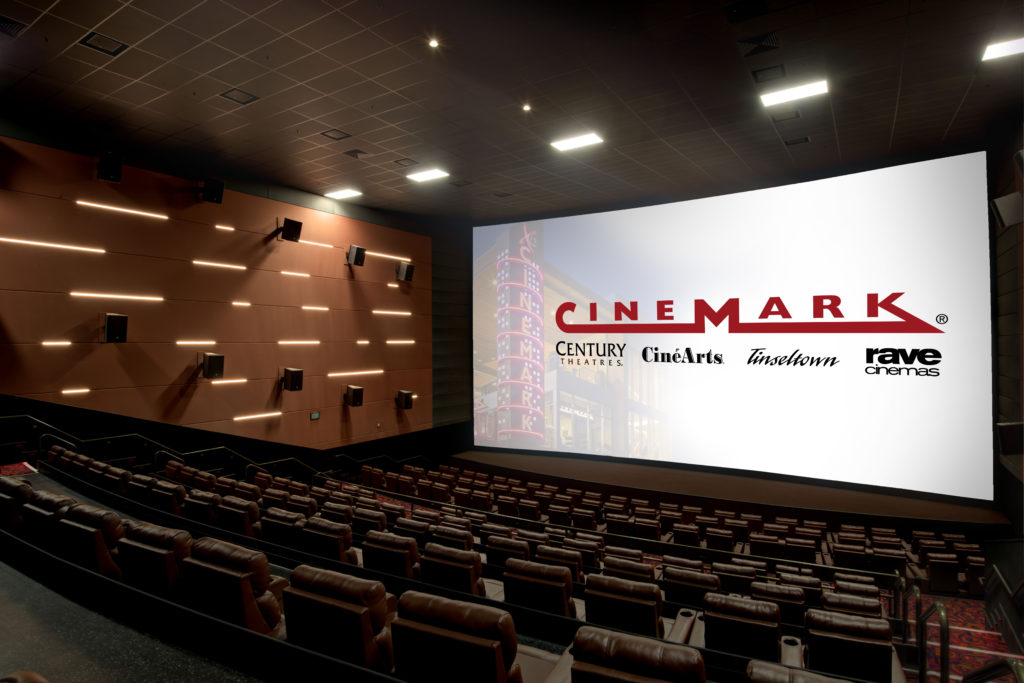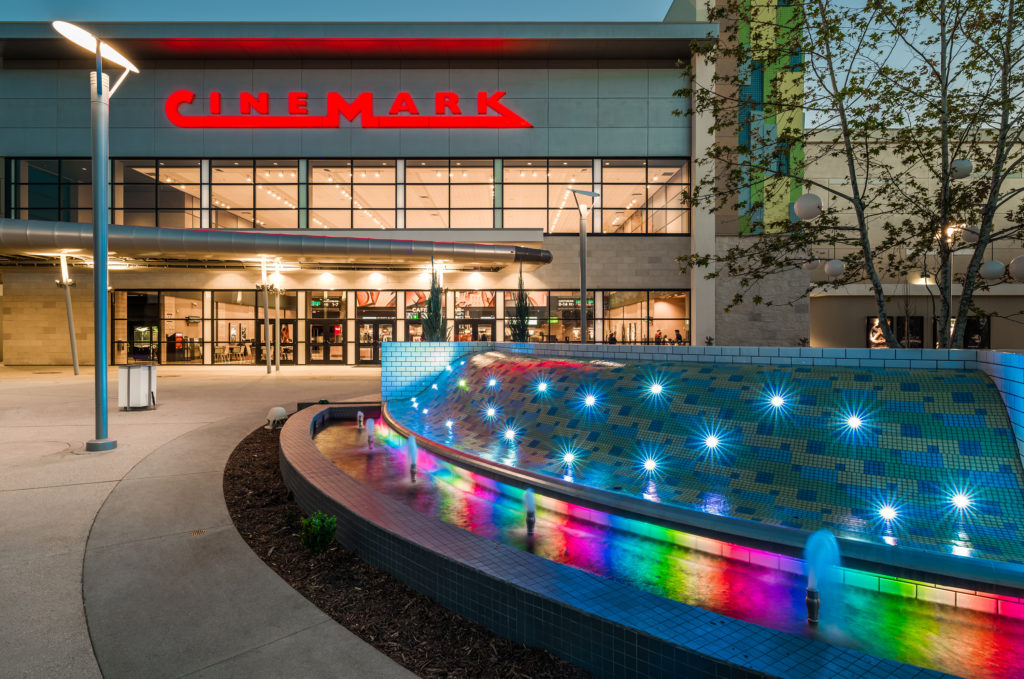It’s an interesting period to be at the helm of one of the world’s leading exhibition circuits. Mark Zoradi, who took the reins as CEO of Cinemark in 2015, knows this full well, overseeing the cinema chain’s 6,000-plus screens in the U.S. and Latin America. Domestically, Cinemark is the third-largest exhibitor in the North American market, with a presence of 4,596 screens at 342 theaters in 41 states. High stakes come with such a high screen count, as Cinemark navigates an increasingly competitive landscape for consumers’ leisure time—keeping pace with other exhibitors and home entertainment options.
Cinemark has been able to retain its competitive edge by investing in its own circuit. Over the last several years, the circuit has embarked on ambitious renovation projects that have outfitted more than half its auditoriums with recliner seating, added expanded food and beverage options to nearly two-thirds of its circuit, and expanded the number of auditoriums for Imax screens and its private-label XD premium large-format brand. A new dine-in concept, CUT! by Cinemark, was rolled out in Frisco, Texas, earlier this year.
On the digital ticketing front, Cinemark has been busy adding partners and expanding its options to make it easier for its most loyal guests to come back to the movies. A recent partnership with Atom Tickets boosted its third-party ticketing network following the introduction of its subscription program, Movie Club—the first in-house solution from a major U.S. circuit.
Zoradi talked with us about the circuit’s progress during his tenure in a conversation ranging from the year’s box office to the impact that loyalty programs will have on the industry in the coming years.

As we enter the second half of 2019, what are your main takeaways from the first semester?
We knew going into the year that the first six months were not going to be as strong as the second six because of the product lineup. That was not unexpected whatsoever. Now that July has hit and we see what’s coming down the road, we’re pretty confident that the 2019 box office is going to be very, very successful. I’ve stopped short of making any predictions because I’ve been in the business way too long to do that.
Do you think it’s going to hit the levels of 2018?
That’s hard to say. Maybe slightly under or maybe slightly above, but it is going to be right in that category. The encouraging thing for us is that internationally, the titles really have lined up much better than they did in 2018 because there is a much stronger family component to the lineup. Toy Story 4 is already the biggest movie ever in Latin America—it has been a massive hit. Latin America has had a really nice uptick, where the U.S. year-to-date is still somewhat down off of 2018, but I’m pretty confident that we’re going to make up a lot of that ground. Maybe not every bit of it, but a lot of that ground in quarters three and four.
One of the main projects during your tenure at Cinemark has been refining the circuit’s loyalty program. This year, you rolled out Cinemark Movie Rewards, which effectively hosts your free and paid loyalty tiers under the same umbrella. Why have loyalty programs been such an important part of your time at Cinemark?
We launched Movie Club, the first exhibitor-sponsored subscription program in the U.S., in December of 2017. We’ve been growing very consistently since that time with nearly 700,000 subscribers [as of July], roughly equivalent to 2,000 subscribers per location. It’s been a phenomenal success with an extremely high retention rate and engagement by the consumer. I’ve been measuring engagement by over 75 percent of the credits that we hand out every month. People are using it each and every month; they’re coming more often, they’re buying more concessions, and they’re being extremely loyal.
Last quarter we relaunched the overall umbrella rewards program called Cinemark Rewards, and that has both the free component, which we’re calling Movie Fan, and also the paid component, which is Movie Club. There’s no change to Movie Club, but on Movie Fan we added a lot more rewards. We changed the system to one point for each dollar spent. The early results have been spectacular.
Your subscription plan, Movie Club, hasn’t had too many modifications since you rolled it out. Do you expect making any modifications on it in the near future?
One of the reasons we haven’t had to do that is because we did a tremendous amount of consumer research on the front end and asked the consumer what they were interested in, what they wanted the most. The concept of having rollover movie credits from month to month was tremendously important, because the consumer knows if they don’t use it for a month or two, they won’t lose the benefits. There’s also the shareability: if you don’t use it for a month or two and you’ve got three credits on your phone, you can bring family and friends and use all credits at the same time.
The second thing that consumers love is the idea of a really simple, easy way to execute discount on concessions. All you have to do is show your membership through your phone and you get 20 percent off all concessions. You don’t have to build up a credit, you don’t have to turn in a coupon, you don’t have to have a promo number. It’s just 20 percent off.
The third thing we’ve succeeded in is the ability to reserve a ticket online with no online fees. It works like a family plan by design; if you’re a member and you want to bring your partner along with you, you have the ability to do so at the same price. You can even buy credits if you want to bring three or four people with you.
There’s no commitment. We modeled that after the streaming platforms; you sign up on an app and you can cancel it on an app. It’s easy in, easy out. It’s month to month at a very reasonable price. We’re constantly looking for ways to upgrade it, but thus far we haven’t found a need yet. The only thing we did is we did raise the price in the four Western states from $8.99 to $9.99. That’s really been the only material change and the consumer response to it was nonexistent. We didn’t have any pushback in raising those prices.
What’s the role of loyalty and subscription industry-wide? How do you think those concepts have benefited the industry in general—and Cinemark specifically?
I think it was really important for us to do this. We were working on Cinemark Movie Club well before MoviePass lowered their price. What we tried to do in all our research ahead of time was ask ourselves, “What is the best use of subscription across multiple industries, not just the exhibition industry?” In the exhibition industry, the only models were what was done in the U.K. and France, which were unlimited plans. And while there is clearly an audience that wants an unlimited plan, it’s a relatively small audience of people who actually go to the movies three or more times a month. But if you’re a normal moviegoer and you’re going six to 10 times a year, then the rollover plan has a much greater impact.
Has the emergence of digital ticketing made it easier to apply these innovations?
Making the ticketing process simpler is important because you need to have the process be really simple and easy. Today it’s all online. You reserve your seat, walk in, and you’re actually more relaxed and have a chance to go to the concession stand because you don’t have to run in to claim a seat. What we tried to do is take all the friction out of buying a movie ticket and make it simple and easy for the consumer.
We wanted to get rid of all the fine print. There’s no fine print to Movie Club. You can join when you want, you can quit when you want. Even if you have movie credits left over after dropping the plan, you have six months to use your existing movie credits. We took all the fine print away from it and made it very simple and easy. We looked at the best of programs like Amazon, gym memberships, TelCos, spoke to the consumer, did a lot of market research and that’s how Movie Club came about. I think it’s been really important to help build loyalty for Cinemark.

You mentioned F&B earlier. Cinemark has done fantastically well raising the per cap in concessions over the last decade. What’s been behind that success?
Food & Beverage has always been an important part of the movie business. About 60 percent of our theaters now have recliners in them. When we do that, we typically also redo the lobby area with the concession stand. As a result, about 50 percent of our theaters now offer some form of alcohol service, whether that’s beer and wine or a full bar. About 70 percent of our circuit today offers expanded food options.
On the exhibition side, our job is to make the moviegoing experience memorable, simple, and easy. That means offering really comfortable seats, great technology, the most innovative sight and sound, and really good food and drinks. I think that’s what made 2018 a record year: great concepts from the studios and upgraded experiences by theater owners. I’m confident that when the whole year is done in ’19, we’re going to see very similar results.
How do you keep up with all the innovations out there? It seems like every year there are a couple of products that will be the Next Big Thing. How much risk is there in allocating your capex correctly in today’s exhibition business?
We’ve put a lot of capex in large-format screens. We have over 260 XD screens with the absolute best sound, wall-to-wall screens, and big screen 70- to 75-foot screens. We also have a number of Imax screens and more XD auditoriums on the way. We have a whole bunch of motion seats with D-Box. And we’ll continue to test new alternatives as they come. We put a significant amount of capex in putting in recliner seats with heaters. When we do consumer research, they list recliners as the single most important amenity in the auditorium. People come in assuming they’re already going to get good light on the screen and great films. The new thing they really want is the ability to have a bigger chair, a bit more room, more personalization, and the ability to put your feet up. It just feels like all of a sudden you’ve gone into a first class environment, as opposed to being crammed in there. We spent a lot of money on remodeling our theaters, and even those that we haven’t reclined, we’ve upgraded significantly. At Cinemark we consistently spend somewhere between $80 and $100 million just on maintenance capex, not to mention the hundreds of millions of dollars in reclining our theaters across the circuit.

How does a multinational circuit like Cinemark continue to be competitive in today’s industry, as entertainment alternatives abound for consumers?
It comes down to the guest experience. We really try to focus on it, and it’s a challenge because we have a lot of hourly employees—some of them part-time. A lot of students in the summer, for example. We spend a lot of time training our employees to be friendly and welcoming, to look people in the eye and tell them they’re glad they’re there. To help out whenever mom or dad walks up with their hands full with three kids and offer to help them to their seat or with their popcorn and drinks. The guest experience is crucial. The marketing side is becoming more and more important because now that we can identify who our consistent customers are through Movie Rewards and Movie Club, we are adapting our marketing to be able to communicate to people in a more personalized manner instead of a mass-market approach.
Looking at the next three to five years, what are some of the biggest opportunities and challenges that are facing the industry?
Our biggest opportunity is to continue improving our theater environments. We’re going to continue doing that at Cinemark. We’re in a fortunate position where we have a very strong balance sheet and we’re going to continue investing in our circuit with the latest projection and sound technology. We’re going to continue upgrading our lobbies, our chairs and loungers, all of that.
Our challenge is partly within our control and partly not, as we work with our content providers to bring great movies that will motivate people to get out of the house. Every time there’s been a new technology—VHS, cable TV, DVDs, and now streaming—people have more and better options at home. But that hasn’t stopped somewhere between 1.2 and 1.3 billion people from leaving their home each year to go out to the movies. That’s our challenge, to continue creating a great experience.


Share this post